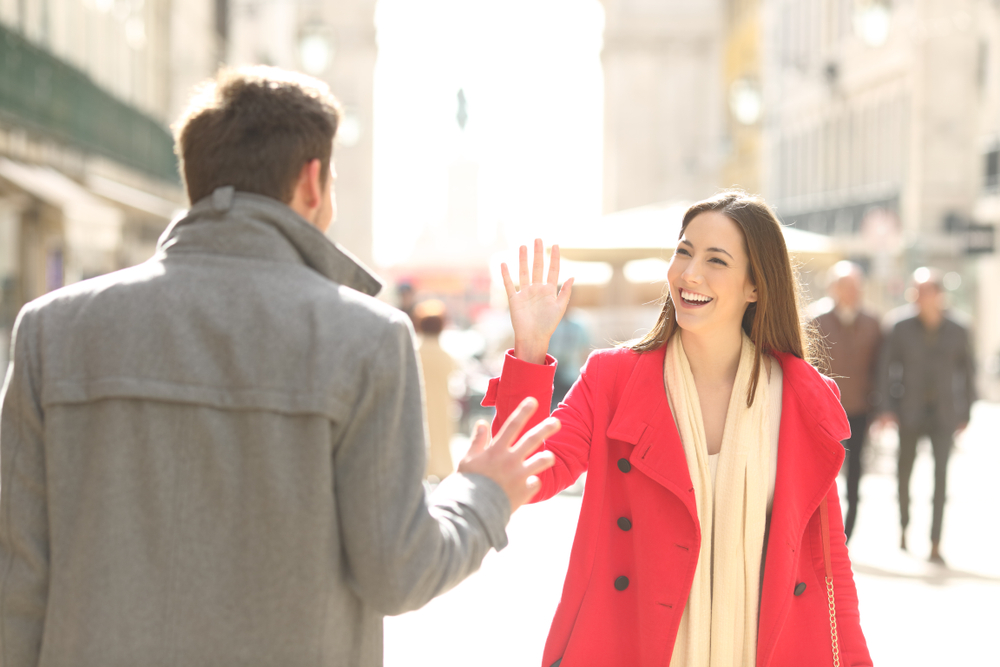In the frozen embrace of Luleå, where daylight dwindles to mere hours, plunging into icy seawater becomes a ritual. For Katariina Yliperttula, a dip before work is about more than braving the cold—it’s an invigorating thrill. “It’s like a happiness rush afterwards,” she says, recounting her winter swims, a habit adopted amidst the dark months.
The loneliness freeze
While there are plenty of winter activities such as ice swimming, skiing, or strolling on frozen pathways to sustain many through the frigid season, the problem of loneliness persists. Pontus Wikström, chair of the winter bathing group Kallis Luleå, emphasizes the significance of a simple ‘hi’: “It means people who meet each other, don’t know each other, become a little happier.”
Saying ‘hi’ to happiness
Enter the “Säg hej! (say hello!)” campaign, a beacon of warmth in the city’s cold. This initiative nudges residents towards meaningful social interactions, advocating for a friendlier city through small but impactful gestures. As Åsa Koski from Luleå municipality notes, “Being greeted by strangers makes people feel more seen and a bit more like you belong.”
Chilling stats and warm intentions
Statistics unveil the pervasive nature of loneliness, particularly among the young, prompting awareness in a place acutely conscious of this societal affliction. Micael Dahlen from the Stockholm School of Economics underscores, “Loneliness and isolation are huge problems any time of the year almost anywhere in the world right now.”
Yet, amidst this push for friendliness, the city’s evolution brings both reserve and openness. Mee Young Yim, an American who moved to Luleå over two decades ago, notes that even though people in the city are “mostly friendly,” they don’t appear to be at first. “Everyone’s a bit reserved, but if you ask then people will help you.”
As the pandemic took hold, an ironic observation emerged: Swedes, known for their reserve, seemed quite prepared for social distancing. Journalist Lisa Bjurwald noted this in a satirical way, citing the Swedes’ predilection for a “remarkably wide so-called interpersonal distance.” This standard, established in daily life—from navigating supermarket aisles to waiting at bus stops—seemed almost like a social script, faithfully obeyed.
The pandemic, of course, exacerbated this social estrangement, reflecting reduced greetings and heightened apprehension. Seyed Mohsen Hashemi, a student, observes the shift: “Before Covid, it was 50-50: some people said hi to each other. But after Covid people have become more scared to have contact with strangers.”
Bridging cultural differences
Hashemi, with roots in the Middle East, navigates cultural variances: “I come from the Middle East and people used to say hi to each other. It’s rude not to say hi to each other. But here if you say hi to strangers they will say: ‘He’s drunk’.”
For individuals like Hashemi, surviving winter involves more than social gestures. Vitamin D, hobbies, and a few white lights installed at home create pockets of warmth. Ronja Melin, an illustrator, highlights the “Säg hej!” campaign’s significance: “You live in your own bubble quite a lot. To notice people is always important.”
In Luleå, where darkness dominates, a simple ‘hello’ becomes a sign of belonging. The ‘Säg hej!’ campaign, like a flicker of light, seeks to thaw the chill of isolation and foster connections. Luleå champions community and human relationships with a simple gesture, a ‘hello’, offering warmth to thaw the winter freeze.











